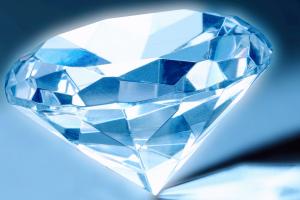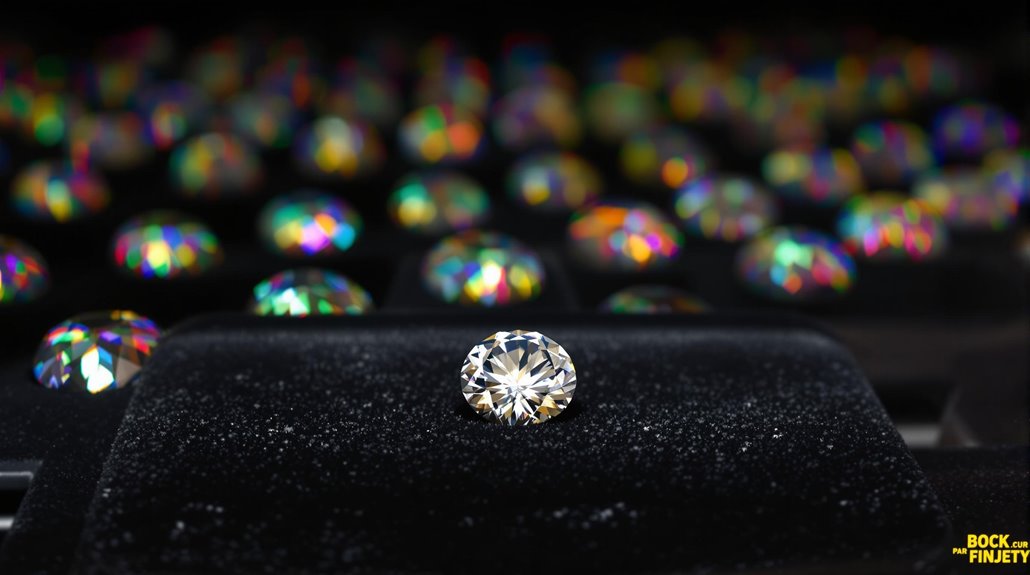The lab-grown diamond market is undergoing significant price corrections because of technological advancements and increased production capacity. Market analysts project a 20% price decline by 2025, driven by mainstream retailers broadening their offerings and improved manufacturing efficiencies. Current lab-grown diamonds sell for up to 90% less than natural stones, with potential further decreases of 50-80% as the market matures. These shifts signal fundamental changes in the diamond industry’s future environment.
Main Highlights
- Lab-grown diamond prices are projected to drop 20% by 2025 due to increased production capacity and technological improvements.
- Mainstream retailers expanding their lab-grown diamond offerings create additional market pressure and price competition.
- Advanced production methods now allow simultaneous creation of over 50 diamonds within 2-4 weeks, driving costs down significantly.
- Lab-grown diamonds currently sell for up to 90% less than natural diamonds, with potential for further 50-80% price decreases.
- Market growth beyond £10 billion by 2025 coupled with increased competition forces producers to reduce prices while maintaining quality.
The lab-grown diamond market is experiencing extraordinary pressure on prices as technological advancements and increased production capacity continue to remodel the industry atmosphere. Industry experts predict a significant market correction, with prices expected to decline by approximately 20% in 2025 as mainstream retailers expand their lab-grown diamond offerings. This adjustment reflects the evolving dynamics of supply and demand, particularly as production efficiencies improve and more players enter the market.
Consumer trends indicate a growing acceptance of lab-grown diamonds, especially among younger generations who prioritize sustainability and ethical sourcing. This shift in consumer preferences has contributed to the market’s projected growth beyond £10 billion by 2025. Advanced HPHT and CVD methods are revolutionizing diamond production with larger, flawless stones. The production speed has now reached levels that make lab-grown diamonds highly cost-effective alternatives. Modern technology enables CVD chambers to produce over 50 diamonds simultaneously within 2-4 weeks. Historical data shows diamond prices have dropped up to 35% in rough diamonds over the past year. Nevertheless, the increasing production capacity and improved manufacturing processes have led to concerns about price stabilization, particularly for larger stones where cost savings in production are most pronounced. The segment currently represents 20% of total sales in the diamond market.
The market’s path shows a consistent pattern of price reduction since 2015, with lab-grown diamonds now typically priced at up to 90% less than their natural counterparts. This significant decrease reflects both technological improvements and increased competition among producers. Industry analysts suggest that prices could experience further declines of 50-80% as the market matures and initial enthusiasm moderates. The IGI in-factory grading systems have helped reduce certification costs compared to traditional methods.
Global supply chain disruptions have added complexity to the market dynamics, affecting both natural and lab-grown diamond sectors. In spite of these challenges, lab-grown diamonds maintain a competitive advantage through lower production costs and shorter supply chains. The industry’s ability to scale production as it reduces expenses continues to exert downward pressure on prices.
The market’s expansion is particularly notable in regions such as North America and Europe, where consumer awareness and acceptance have reached new heights. Emerging markets, particularly in Asia, present significant growth opportunities, though this expansion may further contribute to price pressures as production capacity increases to meet demand.
Collaborations between luxury jewelers and technology innovators are reshaping the industry environment, setting new standards for quality and consumer engagement. Nonetheless, these partnerships must steer through the challenging balance between maintaining perceived value and responding to market pressures for lower prices. The industry’s focus on ethical and sustainable production continues to resonate with eco-conscious consumers, even as prices decline.
Looking ahead, the lab-grown diamond sector faces both opportunities and challenges. Although market growth remains strong, producers must adapt to an environment of declining prices and increasing competition. The industry’s ability to maintain profitability while meeting consumer expectations for quality, sustainability, and value will be essential for long-term success in this evolving market atmosphere.

